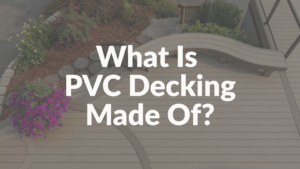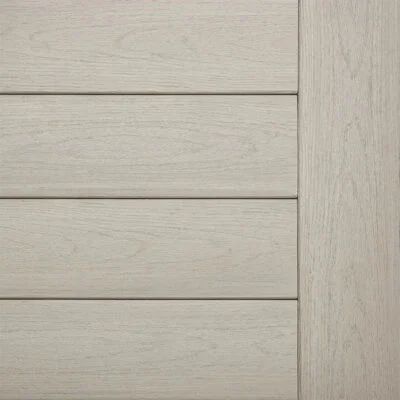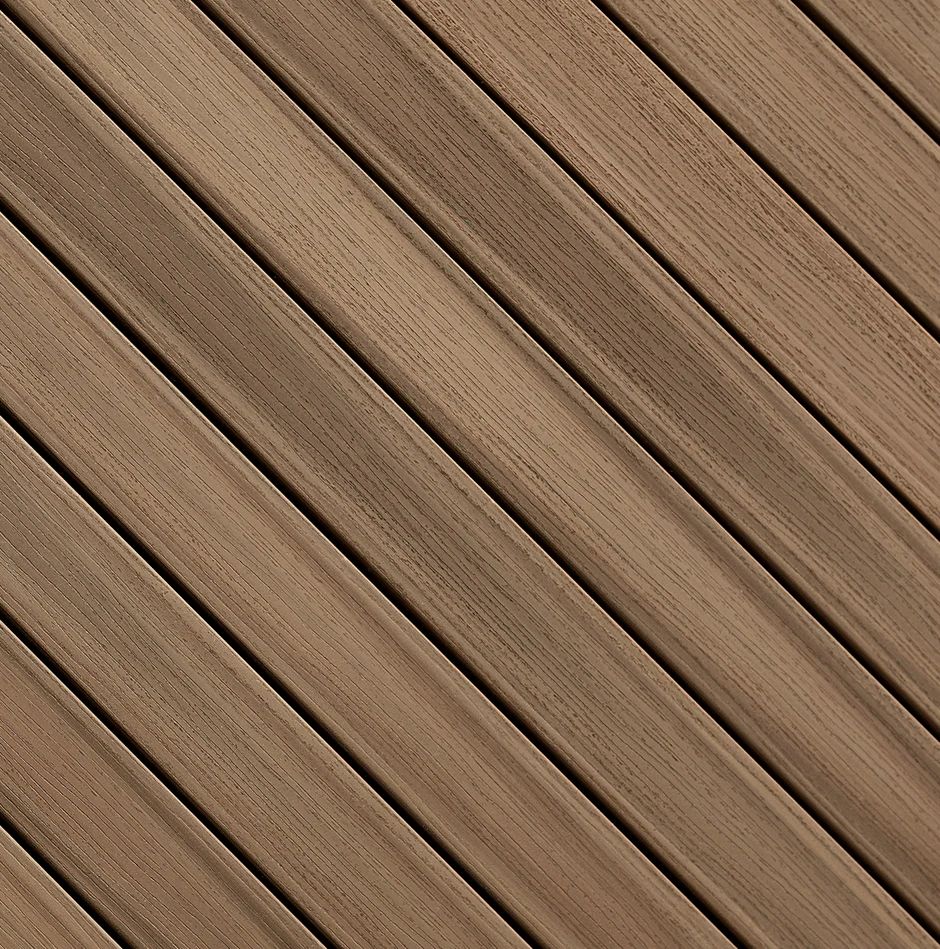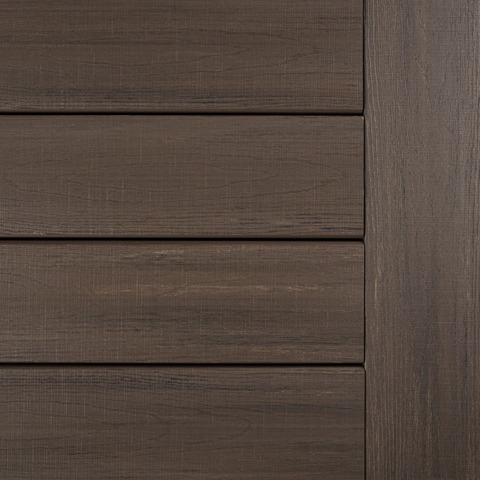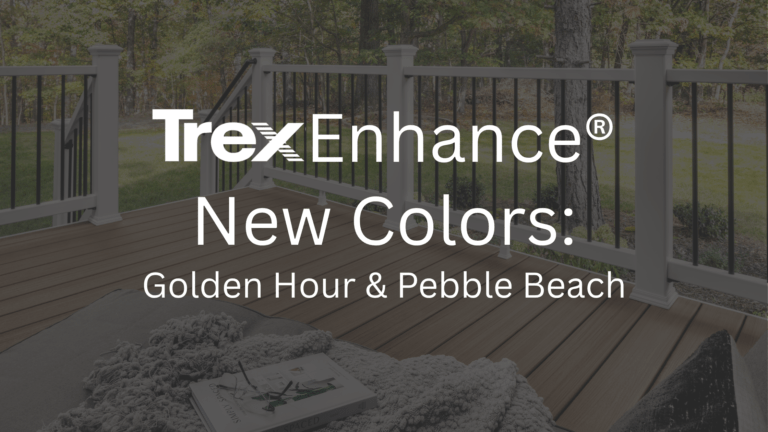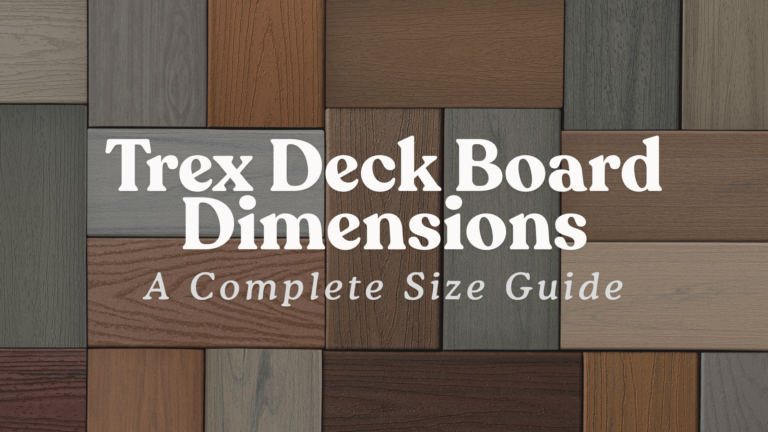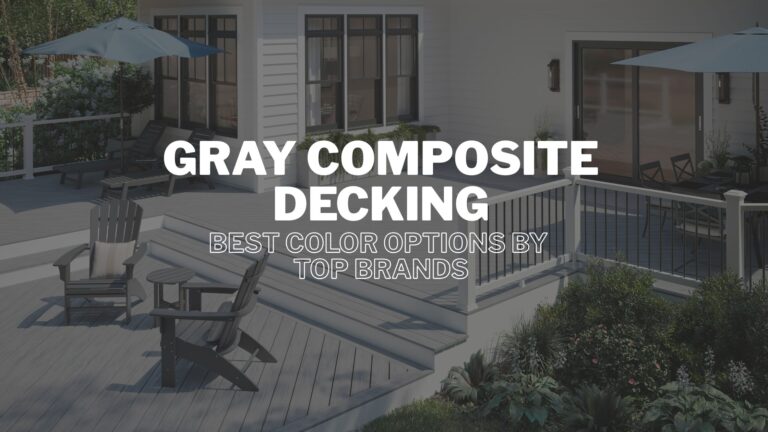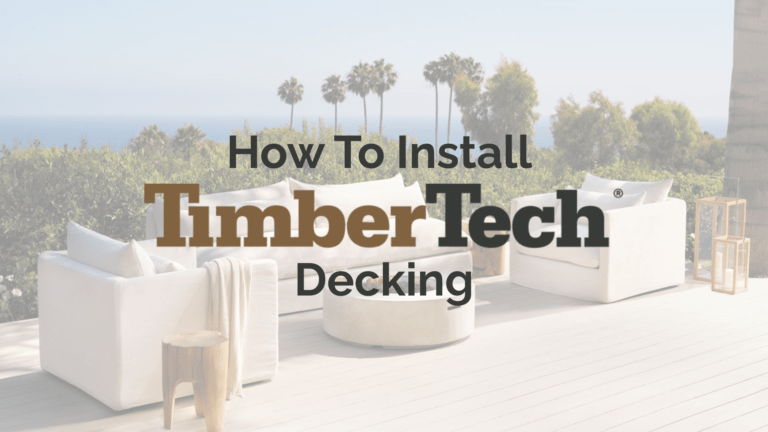PVC decking is a modern alternative to traditional wood decking and composite decking. Made from polyvinyl chloride, this material delivers strength, durability, and low maintenance for homeowners planning a dream deck. Unlike wood, PVC contains no organic material, so it resists rot, insects, and moisture damage.
Homeowners often compare PVC vs. composite decking when deciding how to elevate their outdoor living space. PVC deck boards provide long-term value, slip resistance, and reliable color fading protection, making them one of the most dependable decking materials available today.
Understanding PVC Decking Material
PVC decking material gives homeowners a strong and low-maintenance option for outdoor projects. Unlike wood decking, which demands regular staining and sealing, this product is built from polyvinyl chloride. Because it contains no organic matter, it resists mold, insects, and moisture damage. Each board usually features a protective outer layer that improves strength and appearance.
Modern versions, such as advanced PVC decking, are designed to look like real wood grain while offering long-term reliability. The surface holds up against scratches, stains, and water, helping maintain its aesthetic appeal through every season. Homeowners who want a functional outdoor space appreciate how these boards deliver beauty with far less upkeep than natural lumber.
Another important advantage lies in color protection. Unlike wood, which fades quickly under the sun, these deck boards retain their finish for many years. That durability saves time and reduces the effort required to keep a perfect outdoor space. Combined with reliable customer service and access to professional deck installers, PVC decking material continues to stand out as a dependable choice for anyone planning their dream deck.
How Advanced PVC Decking Mimics Real Wood Grain
Advanced PVC decking technology creates boards with realistic wood grain textures that look remarkably close to natural lumber. This feature gives homeowners the aesthetic appeal of traditional wood without the upkeep of sanding or staining. The detailed surface also helps each board maintain character over time while resisting scratches and stains. As a result, PVC decking provides both beauty and performance, allowing families to build a functional outdoor space that matches their style.
What Are PVC Deck Boards Made Of?
PVC deck boards are manufactured from polyvinyl chloride, a durable plastic material that contains no wood fiber. This design makes them highly resistant to rot, mold, and insect damage. To improve strength and appearance, manufacturers often add a protective cap layer. That surface shields the core from scratches, stains, and moisture, allowing the boards to stay attractive with minimal upkeep.
Many options now feature wood grain textures that resemble natural lumber. These details give homeowners the look of traditional wood decking while keeping all the benefits of a fully synthetic product. The boards also resist color fading from sun exposure, helping outdoor spaces maintain their aesthetic appeal year after year.
Slip resistant technology is another important feature built into modern boards. This safety factor makes them especially appealing for families who want a reliable surface for a dream deck. By combining durability, beauty, and function, PVC decking boards provide homeowners with a dependable material choice that elevates outdoor living.
The Core and Protective Cap Layer
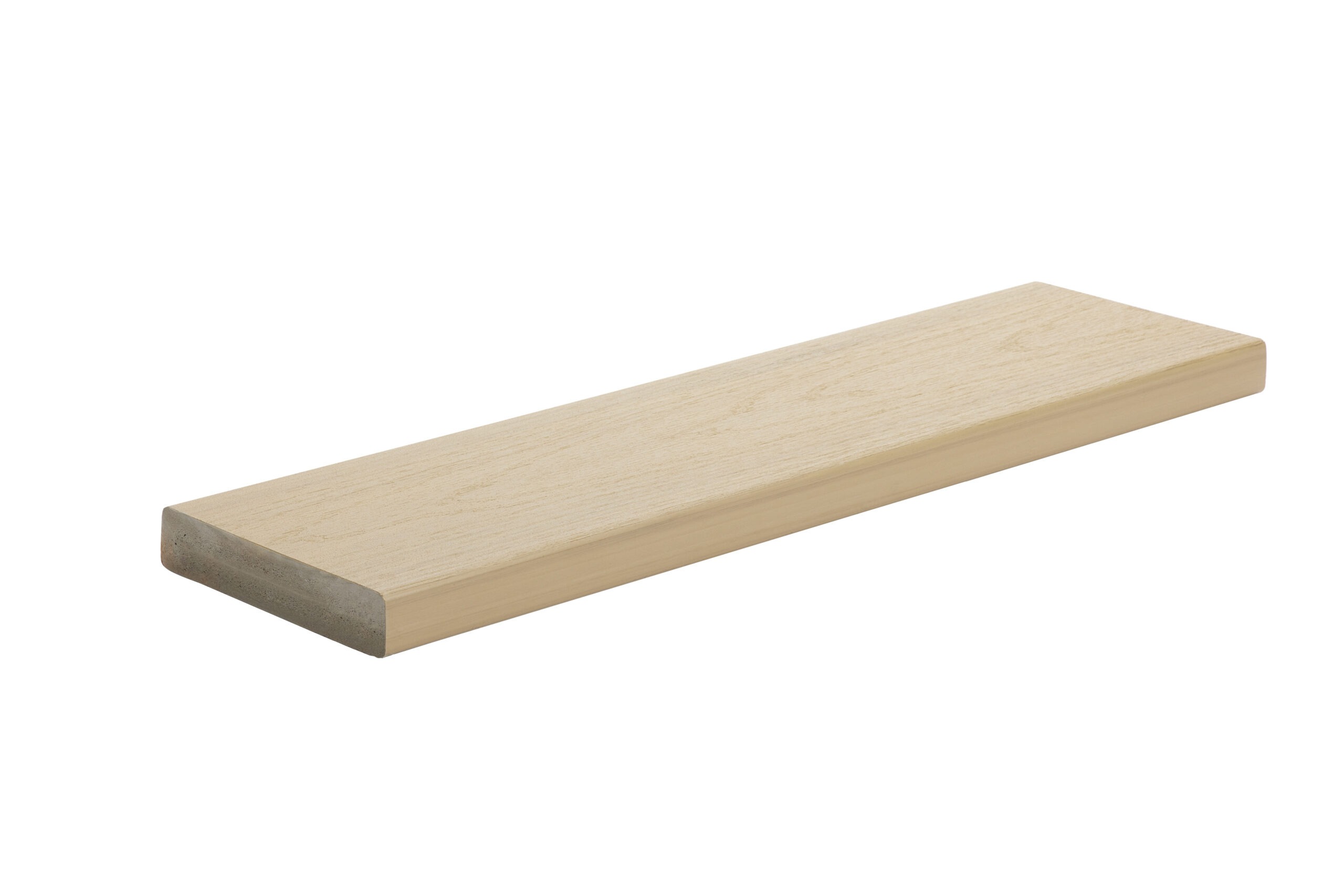

PVC deck boards are engineered with a strong synthetic core and a protective cap layer. This design shields the board from scratches, stains, and weather damage, ensuring durability in outdoor conditions. The cap also helps resist color fading, so the surface maintains its finish even after years of sun exposure. By combining these layers, manufacturers create a product that supports long-term deck building projects while keeping maintenance to a minimum.
PVC vs. Composite Decking: Key Differences
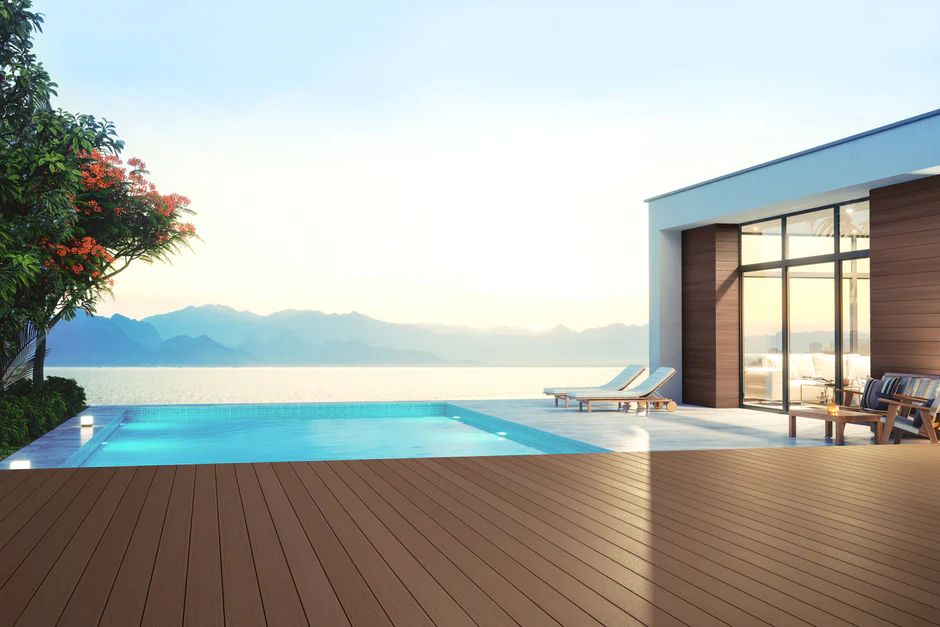

Homeowners often compare PVC vs. composite decking when planning an outdoor project. Both materials deliver long-lasting alternatives to wood decking, but they are built very differently. PVC decking boards contain only polyvinyl chloride. They remain lightweight, easy to handle, and resistant to moisture since no wood fiber is included in the design.
Composite decking offers a different structure. These boards combine recycled materials such as plastics and wood fibers. That blend provides a natural look and a lower price point compared to all-PVC options. However, the presence of wood means composites can still absorb water, making them more prone to swelling or mold in damp environments.
Durability is another point of distinction. Advanced PVC decking protects against stains, scratches, and color fading more effectively than composites. It also performs well in areas exposed to heavy rainfall or near pools where moisture is constant. Composite decking offers good performance overall, but it generally requires more attention to preserve its appearance.
Aesthetic appeal plays a role in this decision as well. Both PVC and composite boards come in colors that mimic real wood grain, but PVC tends to maintain those shades longer. Ultimately, choosing PVC or composite decking depends on budget, location, and the level of maintenance a homeowner is willing to commit to their deck building project.
Benefits of Choosing PVC Decking
PVC decking offers homeowners a blend of strength, style, and convenience that few other decking materials can match. Because the boards contain no wood fiber, they remain fully resistant to rot, mold, and insect damage. This durability helps homeowners protect their investment while reducing the need for constant upkeep.
One of the most appealing benefits is the surface design. Many PVC deck boards feature wood grain patterns that look remarkably natural. These textures give outdoor decking the warmth of wood with none of the maintenance headaches. Families also appreciate the slip resistant finish, which provides added safety around pools and busy gathering spaces.
PVC decking also stands out for its resistance to color fading. Unlike wood decking, which requires staining and sealing to maintain its look, PVC holds its finish through years of sun exposure. Homeowners enjoy a functional outdoor space that remains vibrant with very little work.
Another advantage lies in the overall aesthetic appeal. A wide range of colors and finishes allow homeowners to match their dream deck to their home’s style. By choosing advanced PVC decking, families can elevate their outdoor living area with confidence. These boards support beauty, performance, and peace of mind, making them a reliable choice for long-term deck building projects.
Is PVC Decking Right for You?
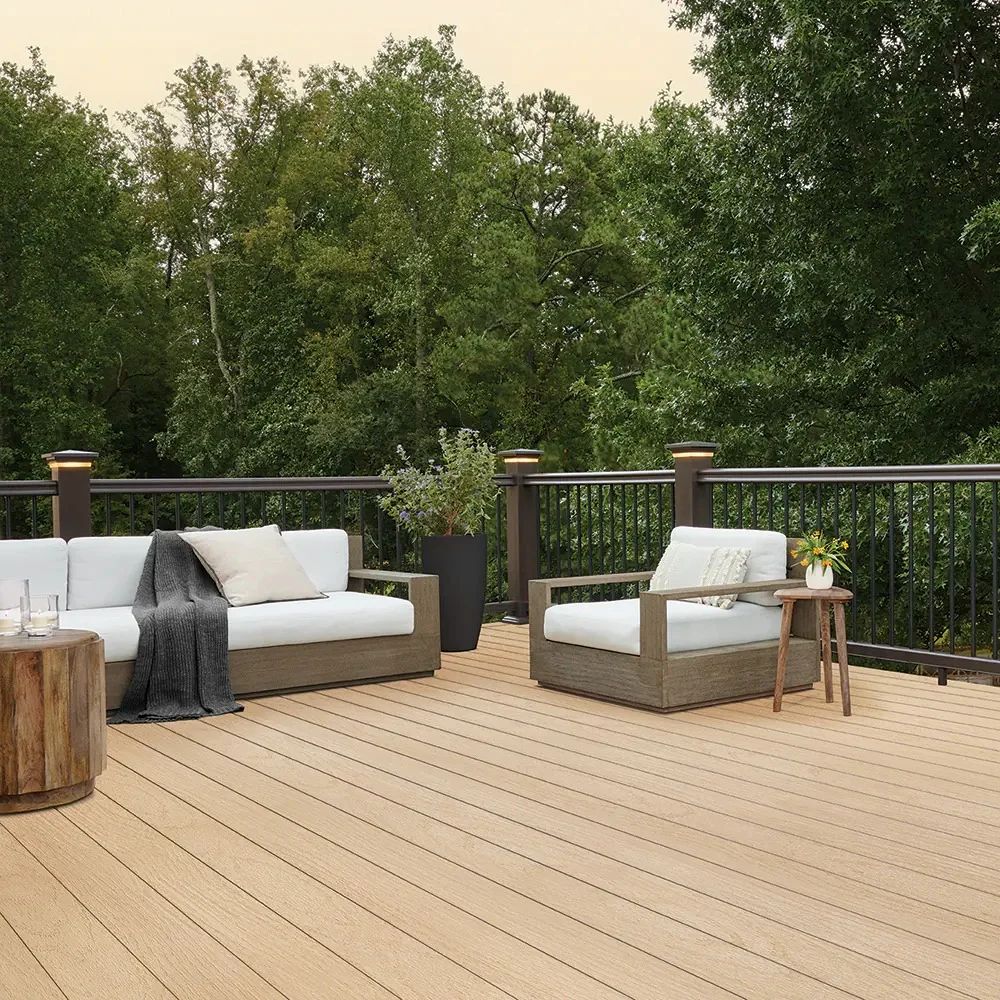

PVC decking boards work best for homeowners who want a low-maintenance outdoor space with long-term durability. If you prefer a deck that resists rot, mold, and color fading, this material may be the right fit. Unlike wood decking, it never requires sanding, staining, or sealing, which saves time and effort year after year.
A slip resistant surface makes it appealing for families with children or anyone who plans to spend time near water. Advanced PVC decking also provides a wide range of styles, from classic wood grain textures to modern finishes. These options give you the flexibility to design a dream deck that matches your home.
Before building, many homeowners consult a professional deck installer. Expert guidance helps ensure durability and brings peace of mind during the construction process. With reliable materials and proper installation, PVC decking supports the creation of a perfect outdoor space built to last.
Final Thoughts on PVC Decking
PVC decking provides homeowners with a reliable choice for outdoor decking that combines durability, safety, and style. Unlike wood decking, it requires very little maintenance while still offering the beauty of wood grain and resistance to color fading. Slip resistant surfaces and long-lasting finishes make it a strong investment for families building a dream deck.
Whether you work with a professional deck installer or take on the planning yourself, this material supports the creation of a functional outdoor space. With trusted customer service and quality boards, PVC decking continues to deliver lasting value.

